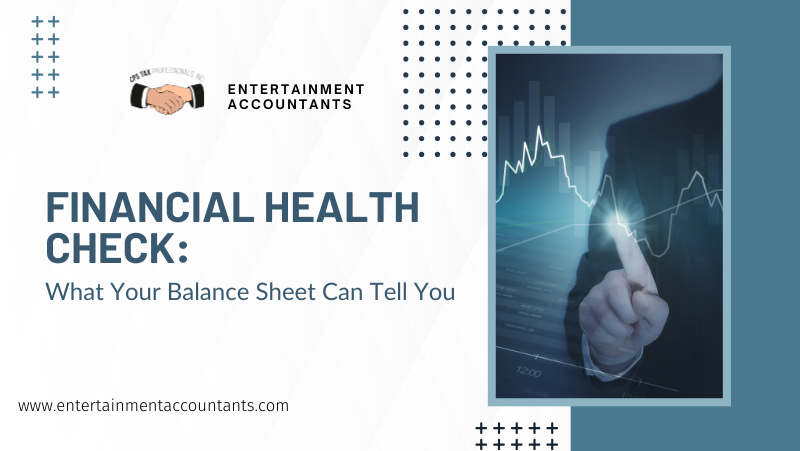In the world of finance, your balance sheet is more than just a document—it’s a vital tool that provides insight into your business’s financial health. Understanding what your balance sheet can tell you is essential for making informed decisions, planning for the future, and ensuring long-term success. In this blog, we’ll explore how to read a balance sheet, what key metrics to look for, and how these figures can help you assess your business’s financial well-being.
What is a Balance Sheet?
A balance sheet, also known as a statement of financial position, is one of the fundamental financial statements used by businesses. It provides a snapshot of a company’s assets, liabilities, and equity at a specific point in time. The balance sheet follows the fundamental accounting equation:
Assets = Liabilities + Equity
This equation ensures that what the company owns (assets) is balanced against what it owes (liabilities) and the residual interest of the owners (equity).
Key Components of a Balance Sheet
Assets:
These are resources owned by the business that have economic value. Assets are typically divided into:
- Current Assets: Cash and other assets expected to be converted to cash or used within a year (e.g., inventory, accounts receivable).
- Non-Current Assets: Long-term investments, property, plant, equipment, and intangible assets like patents.
Liabilities:
These are obligations the business owes to outsiders. Liabilities are categorized into:
- Current Liabilities: Debts and obligations due within one year (e.g., accounts payable, short-term loans).
- Non-Current Liabilities: Long-term debts and obligations (e.g., bonds payable, long-term leases).
Equity:
Also known as shareholders’ equity or owners’ equity, this represents the residual interest in the assets of the company after deducting liabilities. It includes:
- Common Stock: Par value of issued shares.
- Retained Earnings: Profits reinvested in the business rather than distributed as dividends.
Analyzing Your Balance Sheet
Understanding your balance sheet involves more than just reading numbers; it’s about interpreting what those numbers mean for your business. Here are some critical metrics and ratios to consider:
Current Ratio: This ratio measures your company’s ability to pay short-term obligations with its short-term assets. It’s calculated as:
Current Ratio = Current Assets/Current Liabilities
Current Ratio = Current Liabilities/Current Assets
A current ratio above 1 indicates that the company has more current assets than current liabilities, which is a good sign of liquidity.
Debt-to-Equity Ratio: This ratio provides insights into the company’s financial leverage and stability. It’s calculated as:
Debt-to-Equity Ratio = Total Liabilities/Equity
Debt-to-Equity Ratio = Equity/Total Liabilities
A lower ratio generally indicates a more financially stable business, as it implies the company is not overly reliant on debt to finance its operations.
Return on Assets (ROA): This metric assesses how efficiently a company uses its assets to generate profit. It’s calculated as:
ROA = Net Income/Total Assets
ROA = Total Assets/Net Income
A higher ROA indicates better management of assets to produce earnings.
Equity Ratio: This ratio measures the proportion of the total assets financed by the owners’ investments. It’s calculated as:
Equity Ratio = Equity/Total Assets
Equity Ratio = Total Assets/Equity
A higher equity ratio means the company is less dependent on borrowing, which is a positive sign of financial health.
Why Regular Balance Sheet Reviews are Essential
Regularly reviewing your balance sheet helps you:
- Monitor Financial Health: By tracking changes in assets, liabilities, and equity over time, you can identify trends and address potential issues before they become significant problems.
- Make Informed Decisions: Understanding your financial position allows you to make strategic decisions, such as when to invest in new opportunities or cut costs.
- Prepare for Growth: A strong balance sheet can attract investors and lenders, providing the necessary capital to expand your business.
- Ensure Compliance: Regular reviews ensure that your financial records are accurate and comply with accounting standards and regulatory requirements.
Conclusion
Your balance sheet is a powerful tool that, when properly understood and analyzed, can provide a wealth of information about your business’s financial health. By paying attention to key metrics and regularly reviewing your balance sheet, you can make informed decisions that support your business’s growth and stability. Remember, a healthy balance sheet is the cornerstone of a thriving business.

